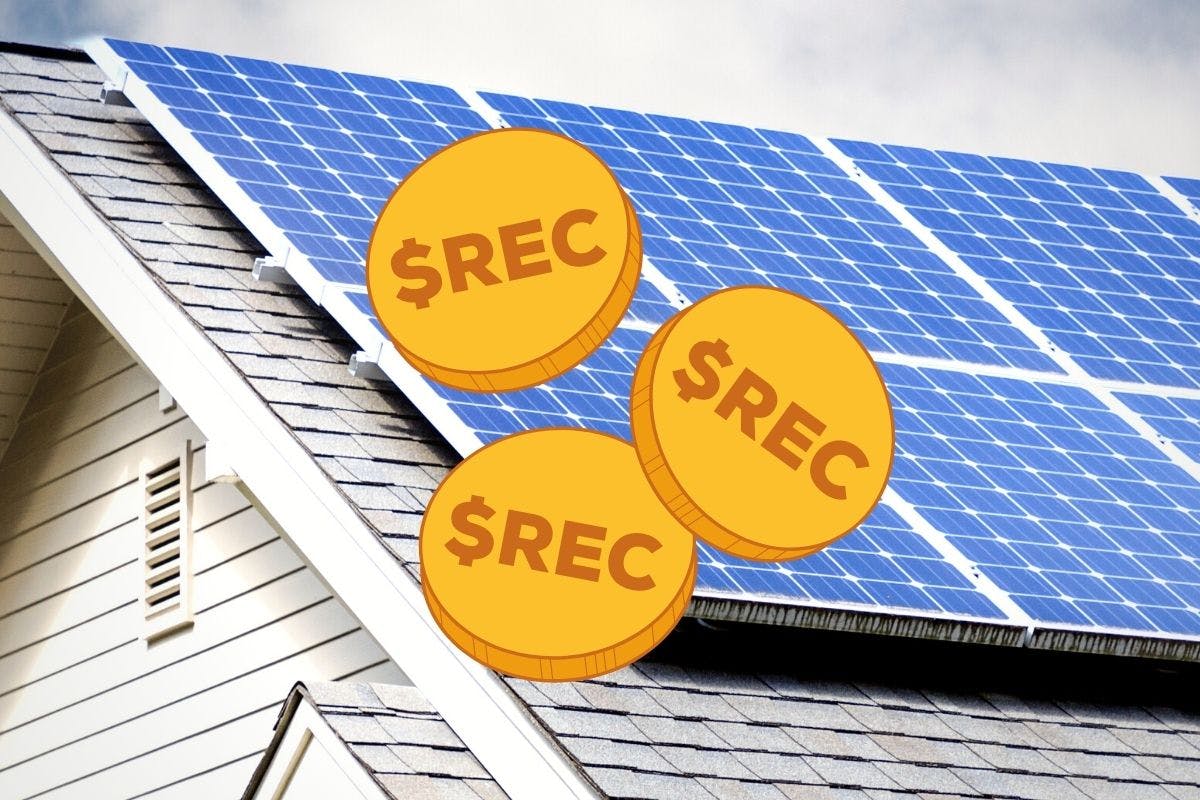When it comes to the grid and powering our homes, all electrons work the same. But, some sources of energy have distinct benefits and, in some places, utilities or other entities are required to use a certain amount of renewable and solar energy.
Electricity generated from solar panels or a coal-fired power plant looks the same, so how do those utilities ensure they’re buying solar energy? By buying solar renewable energy credits, or SRECs. SRECs help incentivize solar installations and compensate solar panel owners. Here’s how they work.
See how much you can save by going solar with Palmetto
What Are Solar Renewable Energy Credits (SRECs)?
Solar renewable energy credits, also known as solar renewable energy certificates, are a way to sell the renewable benefits created by solar power, and create a market for those benefits. SRECs quantify and verify how much solar electricity a home or business produces and allows utilities to pay for that solar production.
One SREC represents 1,000 kilowatt-hours (kWhs) or 1 Megawatt-hour (MWh) of solar electricity generated.
SRECs help utility companies and power plants meet clean energy goals and renewable portfolio standards. Where SREC markets exist, SRECs can be an additional revenue stream for solar panel owners.
Who Buys and Sells SRECs?
Not all states have SREC markets, only those with renewable portfolio standards and sometimes the states bordering them.
Renewable portfolio standards require utility companies to produce a certain percentage of their energy from renewable energy sources. If they can’t generate the electricity themselves, utilities can purchase SRECs as proof they paid someone, including people with home solar panels, to produce that renewable electricity.
With SRECs, the utility is essentially buying the exclusive right to count someone else’s clean energy production from solar panels as their own. Often SRECs can only be bought and sold in the state they were generated in, but sometimes states allow SRECs from neighboring states.
Some solar companies, financing companies, electricity suppliers, and related industry organizations also purchase SRECs upfront from solar panel system owners to reduce up-front installation costs and sell the credits once they have been created.
See how much you can save by going solar with Palmetto
What Is an SREC Worth?
SREC prices vary by state and supply and demand. States with renewable portfolio standards with higher requirements for solar energy typically have higher SREC prices.
Two factors determine the SREC prices:
- Supply and demand: The relationship between the amount of SRECs people create, and the amount of SRECs utilities need to buy.
- Solar alternative compliance payment (ACP): ACP is a tax or penalty created to ensure a utility company meets the state’s renewable energy goals. If the utility company doesn’t buy enough credits, they must pay the ACP. The upper limit of an SREC’s price is usually the same or similar to the ACP.
SREC values can depend on how it’s sold, either on the spot market or by contract. With a spot market, credits are sold every month, or every quarter, for their current value. With a contract, the solar system owner locks in a fixed price per SREC for a multi-year period.
Spot market prices are generally higher, but they can fluctuate, while sales on a contract have lower valuations, but the earnings are more consistent over the contract period.
In general, the typical homeowner in an SREC market can expect to earn anywhere from $10 to $100 for each credit they sell and will generate 10+ credits per year. However, as mentioned, this SREC value can change significantly depending on many factors.
How Do I Sell SRECs?
SRECs are bought and sold on markets.
Utility companies want to minimize their costs, so they want to purchase SRECs from the fewest number of sellers possible. As a result, the easiest way for homeowners to sell SRECs are through brokers that aggregate and sell SRECs to utilities.
SREC markets don’t exist in every state, but they do in Delaware, Maryland, Massachusetts, New Jersey, Ohio, Pennsylvania, Virginia, and Washington, D.C..
How Does the SREC Market Work?
SRECs are commonly bought and sold online through an intermediary, or an SREC aggregator. Top platforms for buying and selling SRECs include SRECTrade, Sol Systems, and Knollwood Energy.
(NOTE: If you go solar with Palmetto, we can help you sign up with SRECTrade, our partner and national SREC brokerage firm, to sell your SRECs. SRECTrade has a seamless sign-up process when you go solar with us, so you just sign the documents we provide, and Palmetto handles the application process.)
An SREC is first sold by renewable energy producers, and can then be aggregated and traded by energy industry brokers, retail electric providers, and utility companies. This creates a market for those certificates and gives them value.
Homeowners and businesses can sell certificates directly to utilities or through aggregators. However, most utilities prefer to buy a large number of credits through a single aggregator, instead of buying small quantities of credits from a large number of individual producers.
SRECs and RECs: What Is the Difference?
A renewable energy certificate (REC) represents the environmental benefits associated with one MWh of electricity generated from renewable energy, including solar and wind. Each REC is a legal claim the electricity came from 100% renewable energy sources.
A solar renewable energy credit (SREC) takes things a step further by confirming that 100% of the energy used to make that clean electricity came from solar power. Because some states have defined solar generation requirements in addition to renewable energy generation requirements, the certificates help keep track of solar electricity.
If you’re interested in using solar energy to power your home and want to know if SRECs can help you save even more money, contact an expert solar advisor today. Get started today with a free solar design and savings estimate.
See what solar can do for you:
Frequently Asked Questions
How much are SRECs worth?
The value of SRECs varies with supply and demand. That means they are worth different amounts depending on the state they’re sold in and when they’re sold. It’s not uncommon to see SREC prices fall between $10 and $100.
How do SRECs work?
By buying SRECs, utilities are able to fulfill their legal obligations to source a certain amount of solar energy. Solar panel owners in areas with SREC markets can sell the SRECs their solar panels generate and earn a bit more money.
What is the downside of SRECs?
SRECs have few downsides. They incentivize the installation of new solar panels and compensate solar panel owners for the energy they produce. Selling your SRECs upfront on a contract may earn you less money, but that depends on what the SREC market in your state does over the length of that contract.
Disclaimer: This content is for educational purposes only. Palmetto does not provide tax, legal, or accounting advice. Please consult your own tax, legal, and accounting advisors.
 Andrew BlokWriter and Editor
Andrew BlokWriter and EditorAndrew has worked as a journalist and writer for four years, over half of those dedicated to covering solar. He currently lives in Tucson, AZ, where you might run into him walking his dog and birding while dodging the heat. He has degrees in English education and journalism.

